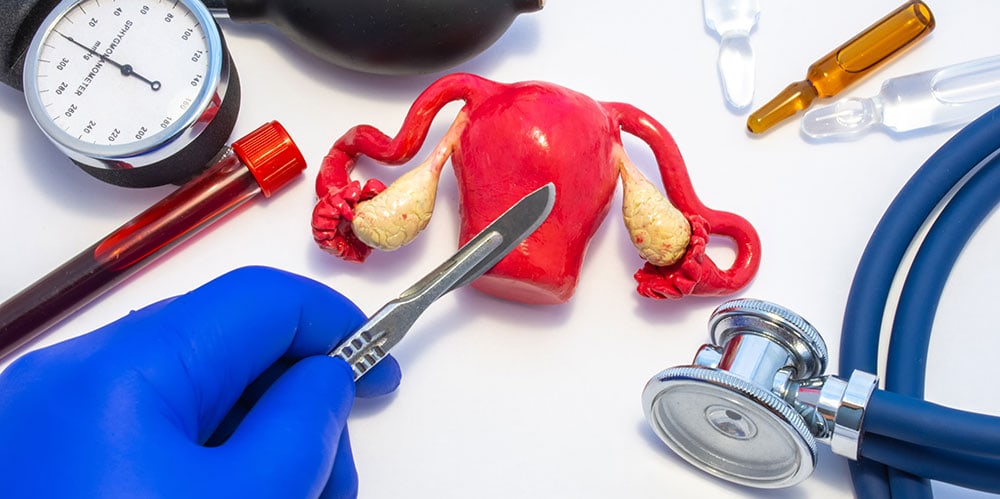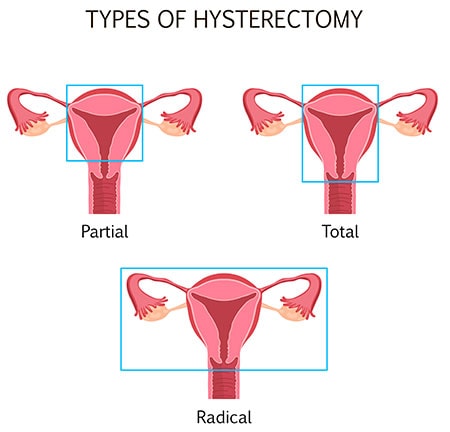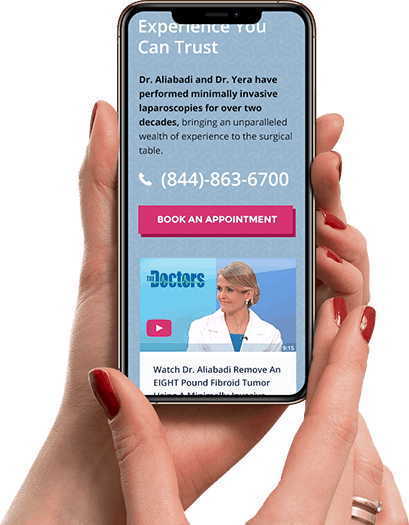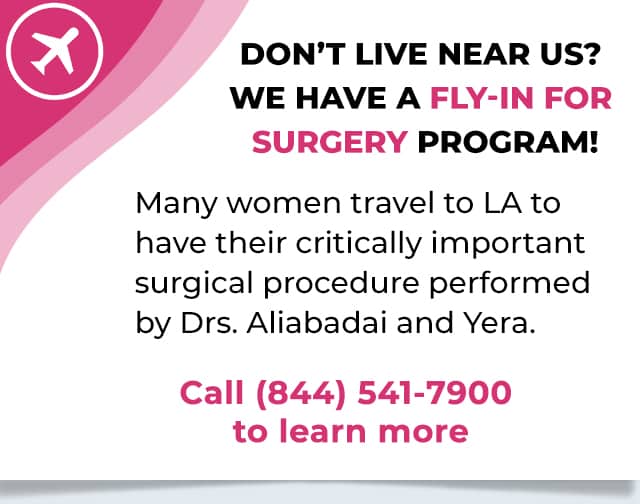What to know about a hysterectomy

Just about everyone with a uterus will consider having a hysterectomy at one time or another in their lives. If you’ve found this page, you’re probably wondering “is a hysterectomy right for me?”
As expert gynecologists dedicated to making hysterectomies as easy and painless as possible, we have the most up-to-date data to help you make your decision.
Hysterectomy Facts
- About 600,000 hysterectomies are performed in the United States each year.
- A hysterectomy is the second most common major surgery undergone by American women, ranking only behind cesarean-sections.
- A hysterectomy is a surgical procedure to remove part or all of the uterus. The ovaries and fallopian tubes may be left intact, but in some cases, they are removed as well.
Why is a hysterectomy done?
There are as many reasons to get a hysterectomy as there are hysterectomy patients. But some of the most common reasons are:
- Removal of cancerous growths: About 10% of hysterectomies are the result of cancerous growth in a woman’s uterus or cervix.
- Abnormally heavy bleeding during menstrual periods: Heavy periods can be painful, debilitating, and negatively impact quality of life. Severe bleeding is sometimes caused by hyperplasia, a condition in which the lining of the uterus becomes too thick.
- Prevention of potential future cancer: Patients with either a family history of cervical, ovarian, or uterine cancer or a genetic predisposition toward such cancers (BRCA 1 or BRCA 2 gene defects) can significantly reduce their chances of incurring cancer through a hysterectomy.
- Removal of benign fibroid growths in the muscles of the uterus: Uterine fibroids are often symptom-free, but they sometimes cause seriously heavy bleeding and severe pain.
- Uterine prolapse: In this condition, weakened uterine muscles and ligaments allow the uterus to drift down into the vagina. This can lead to pelvic pressure and problems eliminating waste.
Are there different types of hysterectomy?
Yes. There are different types of hysterectomy depending on how much of the reproductive organs are being removed as well as what type of surgery you’ll be undergoing.

Partial Hysterectomy
This procedure is what most people think of when they think of a hysterectomy: the uterus is removed, but the cervix and other organs are left intact.
Total Hysterectomy
This surgery includes the removal of the uterus and cervix. If you have a high ovarian cancer risk, your doctor may also remove the ovaries (oophorectomy) or fallopian tubes (salpingectomy).
Radical Hysterectomy
The most extreme treatment option, a radical hysterectomy removes the uterus, cervix, surrounding tissue, and upper part of the vagina.
Abdominal Hysterectomy
The most invasive procedure, an abdominal hysterectomy removes the uterus through a wide incision in the abdomen. This type of surgery requires a short hospital stay and leaves a scar on the lower abdomen.
Vaginal Hysterectomy
The least invasive surgery method, a vaginal hysterectomy does not require any incisions; the uterus is removed through the vagina. The American College of Obstetricians and Gynecologists recommends a vaginal hysterectomy when possible.
Laparoscopic Hysterectomy
A minimally invasive outpatient surgery, a laparoscopic hysterectomy can remove the uterus through three small abdominal incisions using long, thin instruments.
What are hysterectomy side effects?

Being a surgery, a hysterectomy comes with some common side effects, such as:
- pain at the incision site
- swelling, redness, or bruising at the incision site
- burning or itching near the incision
- nerves to the bladder may be damaged, causing incontinence
- some bloody discharge
While removal of the uterus doesn’t majorly impact hormone production, removal of the ovaries (the organs responsible for estrogen production) will trigger surgical menopause. In addition to regular menopausal symptoms such as hot flashes, night sweats, and vaginal dryness, surgical menopause puts you at a higher risk for osteoporosis and heart disease.
Your healthcare provider may offer hormone therapy (HRT) to address these symptoms, but HRT can also put you at higher risk for breast cancer, blood clots, and heart disease.
Are there are alternatives to a hysterectomy?
Hysterectomies used to be the go-to procedure for many uterine medical problems. Depending on your condition, there are other, less-invasive procedures that can improve your quality of life before turning to a hysterectomy.
- Myomectomy – a surgery that removes fibroid tumors (myomas) while leaving the uterus intact
- Endometrial Ablation – an outpatient procedure to treat heavy menstrual bleeding; this technique leaves the uterus in place, but makes it unsafe to attempt future pregnancies
- Vaginal Pessary – for uterine prolapse, a vaginal pessary can relieve symptoms without having to remove the uterus
Hysterectomy for endometriosis
A hysterectomy for endometriosis is not necessarily a surefire cure. In cases of endometriosis, the tissue that is meant to form the inner lining of the uterus inexplicably migrates. It begins to grow in locations outside the uterus.
All hysterectomies remove the uterus, and an absent uterus won’t produce any more problem-causing tissue. But when a hysterectomy is prescribed to remedy endometriosis, the surgeon must remove more than just the uterus and/or ovaries. All the misplaced tissue currently causing the endometriosis must also be surgically excised.
About The Outpatient Hysterectomy Center
As two of the nation’s leading obstetrics and gynecology surgeons, Drs. Thaïs Aliabadi and Ramon Yera offer the very best in women’s health care. Together with their warm professional team, they create a special one-on-one relationship between patient and doctor.
We invite you to establish care with the Outpatient Hysterectomy Center. Please click here to make an appointment or call us at (844) 863-6700.
The Outpatient Hysterectomy Center is conveniently located to patients residing throughout Southern California and the Los Angeles area. At the Cedars-Sinai Medical Center, we are near Beverly Hills, West Hollywood, Santa Monica, West Los Angeles, Culver City, Hollywood, Venice, Marina del Rey, Malibu, Manhattan Beach, and Downtown Los Angeles, to name a few.










